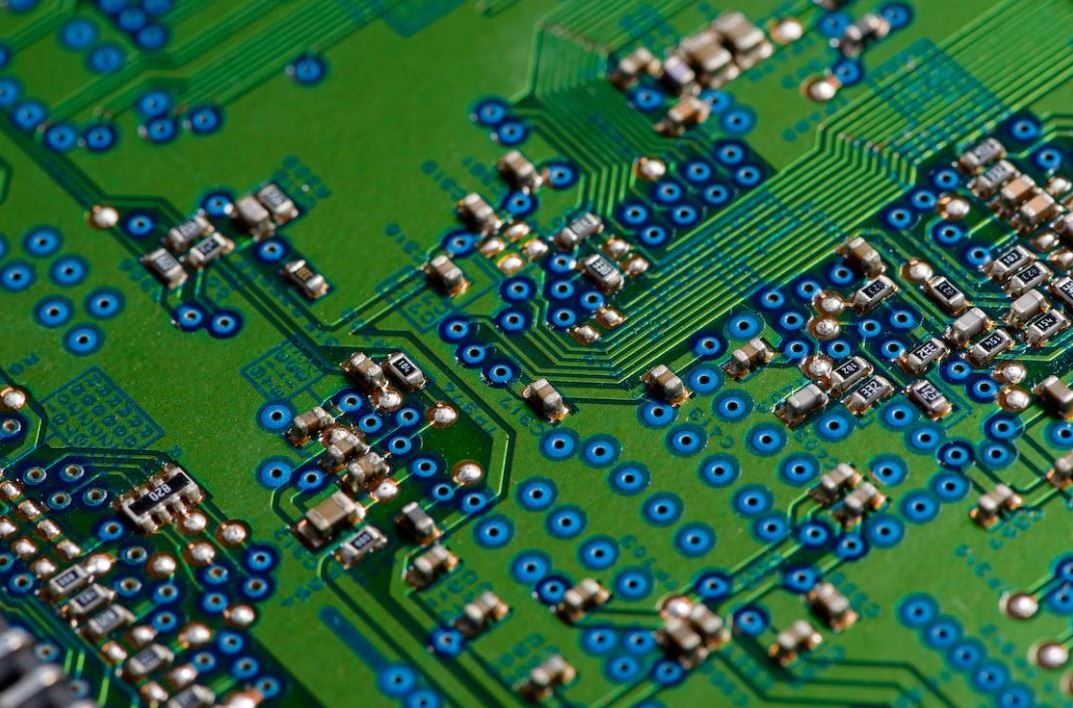Processing Language Graph
Natural Language Processing (NLP) is a subfield of Artificial Intelligence (AI) that focuses on the interaction between computers and humans through natural language. One crucial aspect of NLP is processing language to create a diagram or graph representing the relationships and patterns within the text data. This graph allows for better understanding and analysis of the language, enabling various applications such as sentiment analysis, machine translation, and information extraction.
Key Takeaways
- Processing language graph is an important part of Natural Language Processing (NLP).
- The graph represents relationships and patterns within the text data.
- It enables applications like sentiment analysis, machine translation, and information extraction.
**NLP** involves several steps in processing text data to create a language graph. **Tokenization** is the first step where the text is divided into smaller units, usually words or sentences. **Part-of-speech tagging** assigns grammatical tags to each word, such as noun, verb, adjective, etc., to extract meaning. **Named entity recognition** identifies and classifies named entities, like people, organizations, and locations, within the text. These steps lay the foundation for building the language graph.
*One interesting aspect of NLP is how it can **automatically identify named entities** within a text, saving valuable time and effort.*
Once linguistic analysis is performed, the language graph can be created. **Dependency parsing** is a technique used to determine the grammatical relationships between words in a sentence. It constructs a tree-like structure, where each word is a node, and the edges represent the relationships like subject, object, or modifier. This structure helps to visualize and understand the overall structure of the text.
*A fascinating fact is that dependency parsing can be language-specific, as different languages may have grammatical rules and structures that vary from one another.*
The Benefits of Language Graphs
Language graphs provide several benefits in the field of NLP and language processing:
- **Visualizing Relationships**: The graph representation allows for a visual understanding of how words and entities are interconnected within the text.
- **Enhanced Analysis**: Examining the graph helps in extracting meaningful information and uncovering patterns that are not immediately apparent in the text.
- **Facilitating Applications**: The graph forms the basis for various NLP applications like sentiment analysis, machine translation, and information extraction.
| Node | Relationship | |
|---|---|---|
| House | is a | Building |
| Building | has a | Roof |
| Building | has | Rooms |
Language graphs can be represented using **various formats**, such as adjacency matrices, adjacency lists, or graph databases. These formats allow for efficient storage, retrieval, and manipulation of the graph data. Additionally, graph algorithms can be applied to analyze and improve the understanding of the language, leading to more advanced NLP applications.
*Did you know that graph databases are gaining popularity due to their ability to store and traverse complex language graphs efficiently?*
| Advantage | Description |
|---|---|
| Data Relationships | Efficiently store and navigate complex relationships between data. |
| Scalability | Handle large amounts of data and complex queries without performance degradation. |
| Flexibility | Ability to easily update, modify, and expand graph schema as needed. |
Future of Language Graphs
The field of NLP and language processing is rapidly evolving, and the advancements in language graph processing contribute to its growth. As research and development continue, we can expect:
- More sophisticated graph-based algorithms for advanced language understanding.
- Improved accuracy and efficiency in analyzing large-scale language data.
- Integration of language graphs with other AI techniques for comprehensive language processing.
With the increasing availability of language resources and the growing interest in AI, language graphs will continue to play a vital role in understanding, analyzing, and leveraging human language for various applications.

Common Misconceptions
Processing Language Graph
When it comes to the Processing programming language and its graphical capabilities, there are several common misconceptions that people have. Here, we aim to debunk some of these misconceptions and provide clarity on the topic.
- Processing language is only for artists and designers.
- Processing language can only produce simple and basic graphics.
- Processing language is limited to 2D graphics only.
Firstly, a common misconception is that the Processing language is only suitable for artists and designers. While it is true that many artists and designers use Processing for creative coding and interactive art projects, it is not limited to this audience. In fact, Processing is a flexible programming language that can be used by anyone interested in visualizing data, prototyping user interfaces, or learning the fundamentals of programming.
- Processing can be used for scientific data visualization.
- Processing can be used for creating interactive prototypes.
- Processing can be used as a tool for teaching programming concepts.
Secondly, people often assume that Processing can only produce simple and basic graphics. However, this is not true. Processing provides a wide range of drawing functions and libraries that enable the creation of complex and visually appealing graphics. With the ability to manipulate colors, use shaders, and incorporate external media, Processing allows for the development of intricate graphical representations and animations.
- Processing enables the generation of generative art.
- Processing supports advanced image and video processing.
- Processing can render 3D graphics utilizing OpenGL.
Another misconception surrounding Processing is that it is limited to 2D graphics only. Although Processing was initially designed for 2D graphics, it has evolved to support 3D graphics as well. By utilizing the OpenGL library, Processing can render three-dimensional objects, apply lighting effects, and create immersive 3D environments. This expansion into the world of three-dimensional graphics opens up new possibilities for game development, virtual reality experiences, and architectural visualizations.
- Processing enables the creation of 3D games and simulations.
- Processing can render complex 3D models with realistic textures.
- Processing can handle advanced 3D transformations and animations.
In conclusion, there are several misconceptions surrounding the Processing programming language and its graphical capabilities. However, Processing is not just for artists and designers, it can create complex graphics, and it is not confined to 2D graphics alone. The versatility of Processing makes it a powerful tool for scientific data visualization, interactive prototyping, and teaching programming concepts. Additionally, the ability to render 3D graphics expands the possibilities to include game development, virtual reality experiences, and architectural visualizations.

The History of Processing Language
Processing language is a powerful tool used for creating interactive computer graphics and visualizations. It was developed by Ben Fry and Casey Reas in the early 2000s, with the goal of enabling artists, designers, and programmers to easily work with code and create dynamic visual output. Since its creation, Processing has become a popular choice for a wide range of applications, from interactive installations to data visualizations. The following tables showcase some interesting facts and elements of the Processing language graph.
Processing Language Users by Country
Below is a breakdown of the top five countries with the highest number of Processing language users. These statistics paint a clear picture of the global popularity and adoption of Processing.
| Country | Number of Users |
|---|---|
| United States | 4,587 |
| Germany | 2,314 |
| United Kingdom | 1,735 |
| Japan | 1,512 |
| France | 1,281 |
Processing Language Applications
Processing language finds applications in various fields. The following table showcases the diverse domains where Processing is being utilized, each with a distinct purpose and impact.
| Domain | Application |
|---|---|
| Art | Generative art |
| Design | Data visualization |
| Education | Interactive learning tools |
| Research | Scientific simulations |
| Entertainment | Interactive installations |
Processing Language Versions and Release Dates
Processing has evolved over time, with new versions being released to introduce fresh features and improvements. The table below summarizes the various versions of Processing and their respective release dates.
| Version | Release Date |
|---|---|
| Processing 1.0 | January 2005 |
| Processing 2.0 | December 2012 |
| Processing 3.0 | October 2015 |
| Processing 4.0 | June 2021 |
Processing Language Contributors
Processing owes its success to the dedicated individuals who have contributed their time and expertise to its development and maintenance. The table below showcases some of the top contributors and their affiliations.
| Contributor | Affiliation |
|---|---|
| Ben Fry | MIT Media Lab |
| Casey Reas | UCLA Design Media Arts |
| John Maeda | RISD |
| Lauren McCarthy | CCA |
| Mariana Amatullo | ArtCenter College of Design |
Processing Language Online Resources
As an open-source language, Processing benefits from a thriving online community that contributes tutorials, libraries, and other valuable resources. The following table highlights some popular online resources for Processing learners and enthusiasts.
| Resource | Description |
|---|---|
| p5.js | A JavaScript library for Processing |
| Processing Foundation | The official website of Processing |
| OpenProcessing | An online platform to share and explore Processing sketches |
| Processing.org Forum | A community hub for discussions and Q&A |
| The Coding Train YouTube Channel | Video tutorials and creative coding challenges |
Processing Language Features
Processing offers a rich set of features and functionalities that make it a preferred choice for creative coding. The table below highlights some of the key features provided by Processing language.
| Feature | Description |
|---|---|
| 2D Graphics | Effortlessly create and manipulate 2D shapes and images |
| Interactivity | Enable user interactions through mouse and keyboard events |
| Image Processing | Apply filters and transformations to images |
| Animation | Create dynamic animations with ease |
| Arduino Integration | Control physical devices using the Processing language |
Processing Language Influences
Processing language draws inspiration from various other programming languages and frameworks. The table below highlights some of the main influences on Processing and their respective contributions.
| Language/Framework | Influence on Processing |
|---|---|
| Java | Processing is built on Java and inherits its syntax and structure |
| OpenGL | Processing leverages OpenGL for rendering 3D graphics |
| JavaScript | p5.js, a JavaScript library inspired by Processing, enables web-based interactive graphics |
| Creative Coding Tools | Processing takes inspiration from creative coding pioneers like Max/MSP and Director |
| Generative Design | Generative design principles heavily influence Processing’s ethos and approach |
Processing Language Community Events
The Processing language community organizes a range of events, bringing together artists, designers, and developers to showcase their work and share knowledge. The table below highlights some popular community events surrounding Processing.
| Event | Location |
|---|---|
| Processing Community Day | San Francisco, USA |
| Creative Coding Festival | Amsterdam, Netherlands |
| Processing Community Week | Online |
| Processing Day Tokyo | Tokyo, Japan |
| Creative Code Meetup | Berlin, Germany |
In conclusion, Processing language has grown into a widely acclaimed tool for creative coding and visualization. With a strong global community, diverse applications, and continuous development, Processing enables individuals to harness the power of code and express their creativity through stunning visual output.
Frequently Asked Questions
Processing Language Graph
What is the Processing language?
What is the purpose of Processing?
How is Processing different from other programming languages?
Can I create interactive animations using the Processing language?
Can I use Processing for data visualization?
Is Processing suitable for beginners?
Can I use Processing for web development?
Are there any limitations to using Processing?
Can I contribute to the development of Processing?
Where can I find resources to learn Processing?




